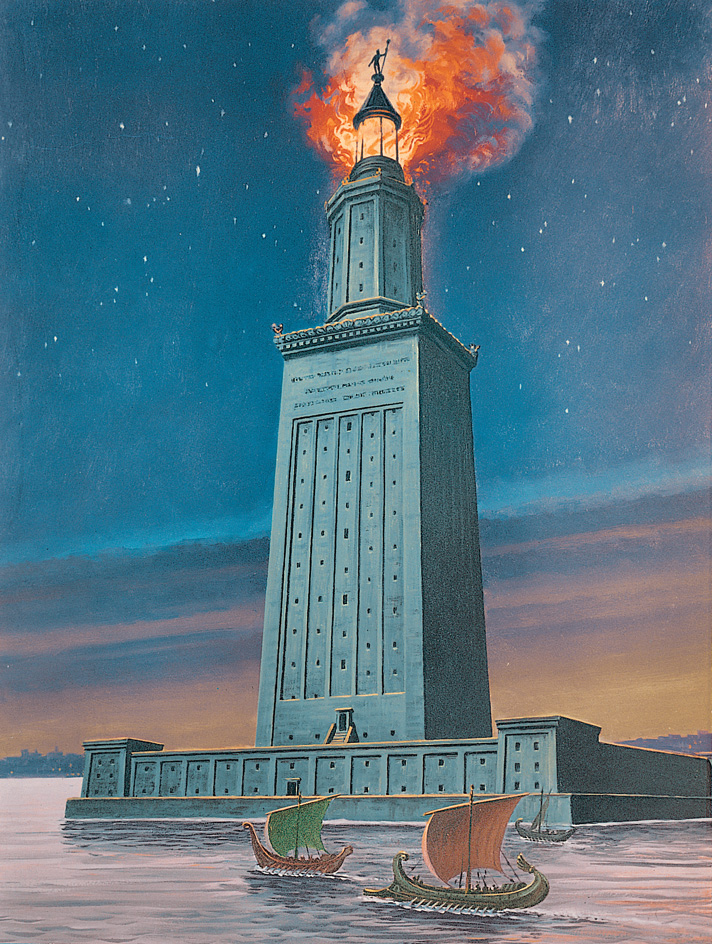Seven Wonders of the Ancient World is a listing of notable objects built between about 2500 and 250 B.C. The practice of listing the seven wonders probably began in ancient Greece. The ancient Romans also listed memorable things that travelers should see. Many such lists were made, and they included many different objects. But all the lists of ancient wonders included only objects made by human beings and considered notable because of their great size or some other unusual quality. This article discusses the seven most commonly listed wonders of the ancient world.
The pyramids of Egypt at Giza,
built as tombs for Egyptian kings, are both the oldest and the best preserved of all the ancient wonders. Three famous pyramids there were built about 2600 to 2500 B.C. The largest pyramid, called the Great Pyramid, stands about 450 feet (137 meters) high. Its base occupies about 13 acres (5 hectares). See Pyramids .
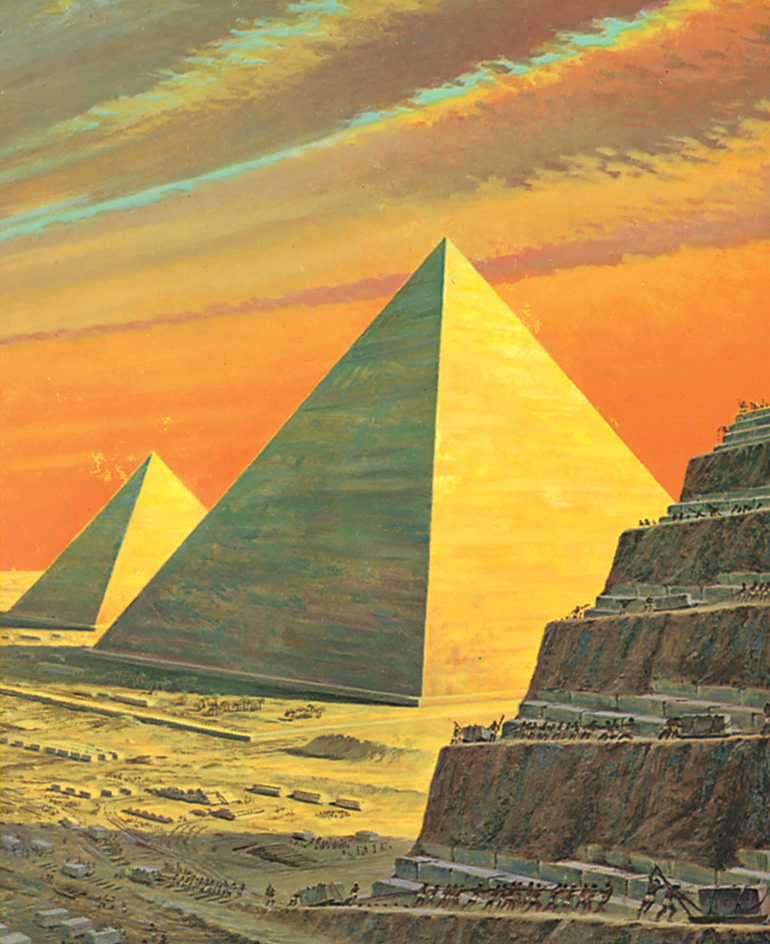
The Hanging Gardens of Babylon
were probably built by King Nebuchadnezzar II for one of his wives. Nebuchadnezzar ruled Babylon, which was near modern Baghdad in Iraq, from 605 to 562 B.C. Our knowledge of the gardens comes from an account written around 280 B.C. by Berossus, a Babylonian priest. Later writers, who may have only read about the gardens, described them as laid out on a brick terrace about 400 feet (120 meters) square and 75 feet (23 meters) above the ground. In order to irrigate the flowers and trees in the gardens, slaves worked in shifts turning screws to lift water from the Euphrates River. Archaeologists have not been able to find the remains of the gardens.
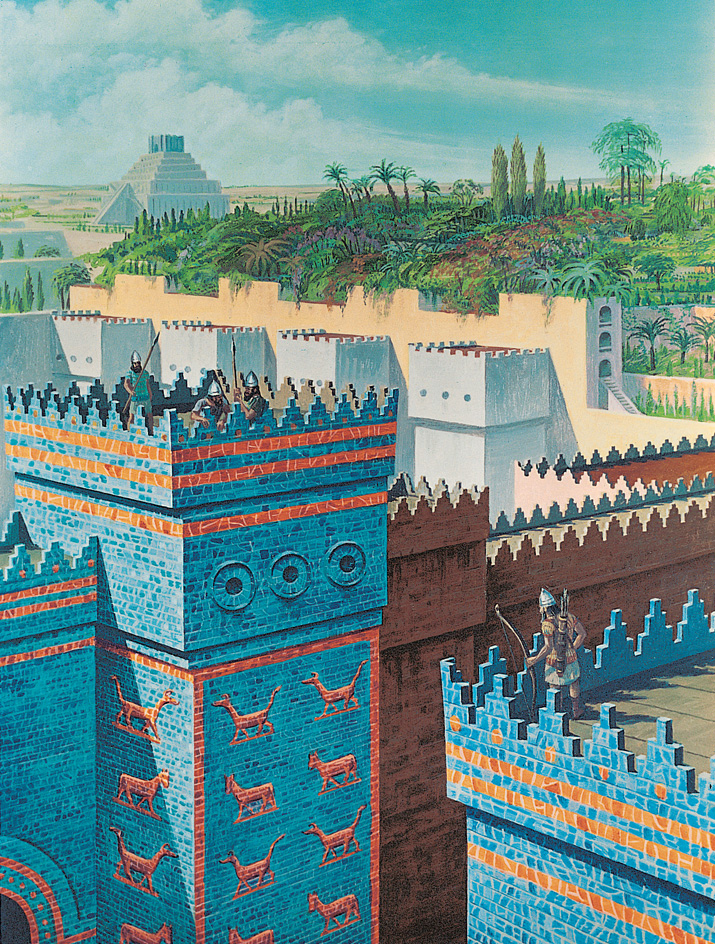
The Temple of Artemis at Ephesus,
built about 550 B.C., was one of the largest and most sophisticated temples built in ancient times. It stood in the Greek city of Ephesus, on the west coast of what is now Turkey. The temple was entirely marble, except for its tile-covered wooden roof. It was dedicated to the Greek goddess Artemis and was designed by the architect Chersiphron and his son, Metagenes. Its foundation measured 360 by 180 feet (110 by 55 meters). It had 106 columns, about 67 feet (20 meters) high, in a double row around the cella (inner space). Wealthy King Croesus of Lydia donated some of the columns.
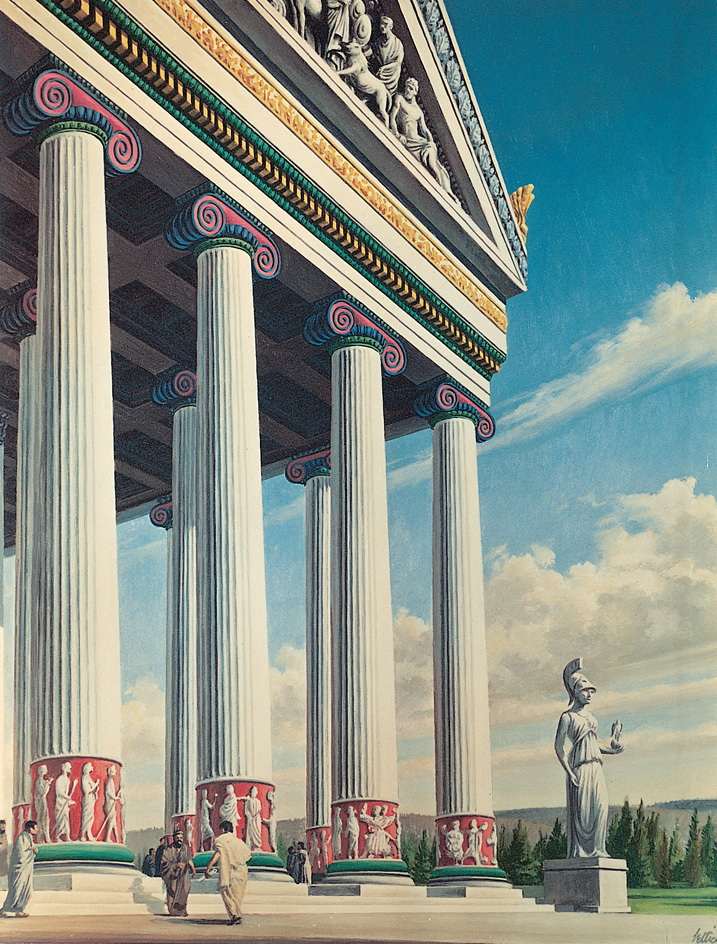
The temple burned down in 356 B.C., and another one like it was built on the same foundation. Goths looted the second temple in A.D. 262. Only the foundation and parts of the second temple remain. The British Museum in London contains sculptures from the second temple.
The statue of Zeus
at Olympia, Greece, was perhaps the most famous statue in the ancient world. The Greek sculptor Phidias made it about 430 B.C., and dedicated it to Zeus, the king of the gods. The statue, probably about 43 feet (13 meters) high, showed Zeus on his throne. The statue had a wooden core, and Phidias made Zeus’s robe and ornaments out of gold and the god’s flesh out of ivory. In the statue, Zeus wore a wreath around his head and held a figure of Nike, the winged goddess of victory, in his right hand. He held an eagle-headed scepter (king’s rod) in his left hand. The statue was taken to Constantinople in A.D. 391, where it was destroyed in a fire in 462. See Phidias .
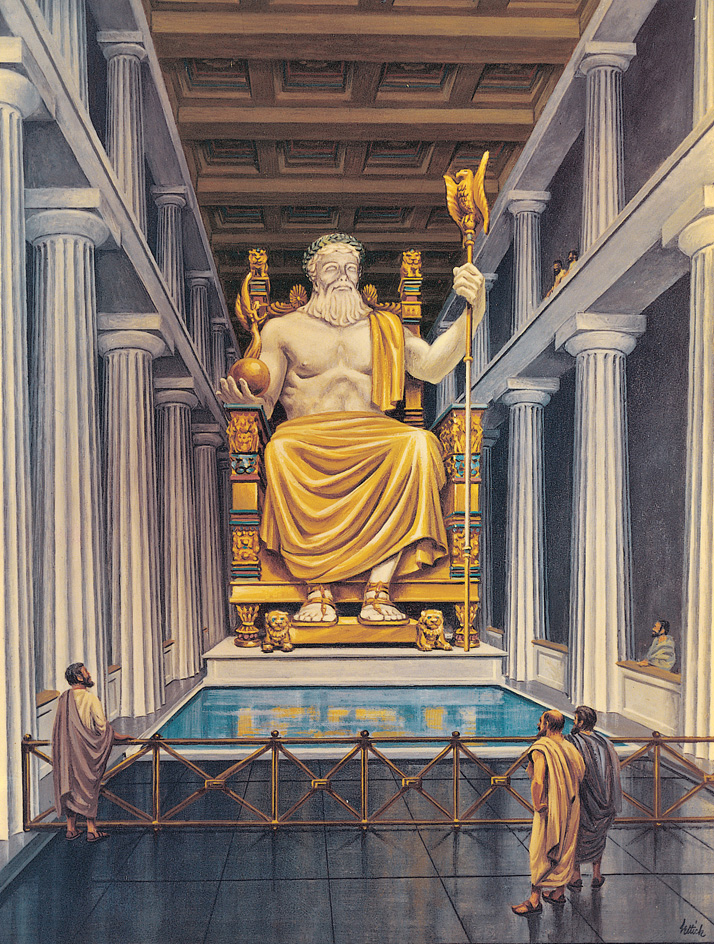
The Mausoleum at Halicarnassus,
in what is now southwestern Turkey, was a huge, white marble tomb. The tomb was built about 353 B.C. to hold the remains of Mausolus, a provincial ruler in the Persian Empire. Its size and decorations made it so famous that all large tombs are now called mausoleums.
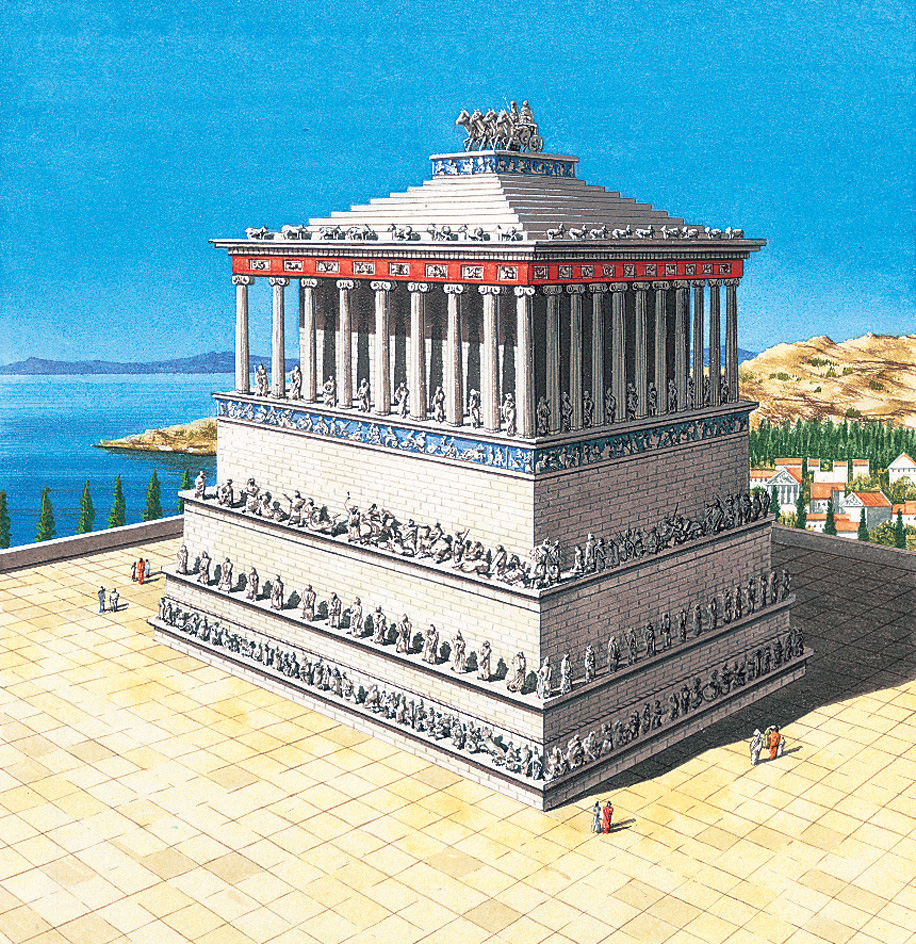
The tomb was about 150 feet (46 meters) high. It had a rectangular base supporting a colonnade formed by 36 columns. A stepped pyramid rested on the colonnade, and a statue of Mausolus in a chariot probably stood on top of the pyramid. The Greek architects Satyros and Pythios designed the tomb. Four famous Greek sculptors—Bryaxis, Leochares, Scopas, and Timotheus—carved the frieze (decorated band) and statues on the building. The upper part of the mausoleum was destroyed by an earthquake in the A.D. 1200’s, and only pieces of the building and its decorations remain. The British Museum in London contains some sculptures from the mausoleum.
The Colossus of Rhodes
was a huge bronze statue that stood near the harbor of Rhodes, an island in the Aegean Sea. The statue honored the sun god Helios. It stood about 110 feet (34 meters) tall. The Greek sculptor Chares worked on it from about 294 to 282 B.C. He used stone blocks and about 81/2 tons (7.7 metric tons) of iron bars to support the hollow statue. In 226 B.C., the Colossus was knocked down by an earthquake. It lay in ruins until the metal remains were sold for scrap in A.D. 653.
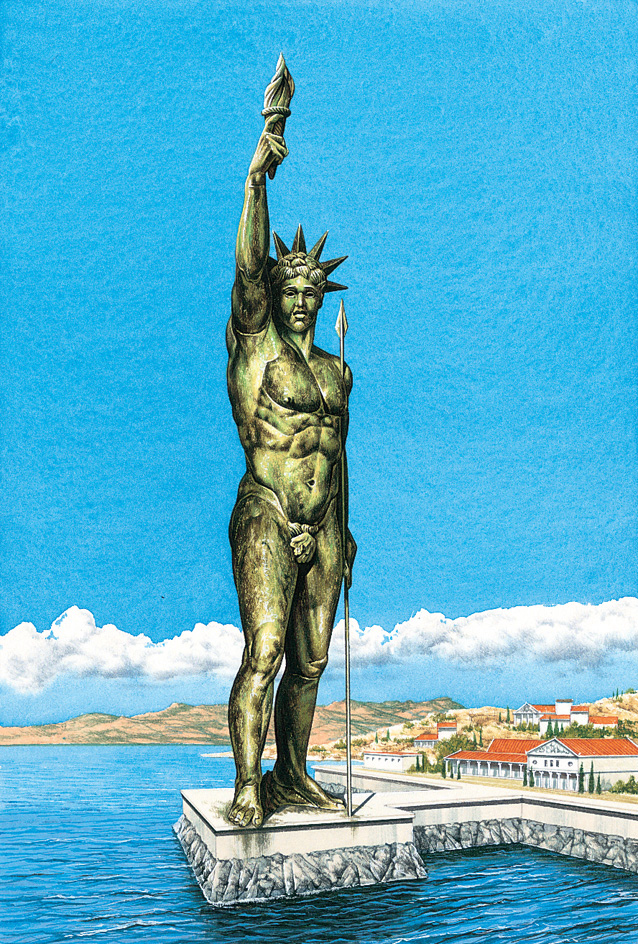
The Lighthouse of Alexandria,
over 440 feet (134 meters) high, stood on the island of Pharos in the harbor of Alexandria, Egypt. It became so famous that the word pharos came to mean lighthouse.
The structure, completed during the reign of Ptolemy II (283-246 B.C.) from a design by the Greek architect Sostratos, rose from a stone platform in three sections. The bottom section of the lighthouse was square, the middle eight-sided, and the top circular. A fire, which may have been amplified by mirrors, provided light from the top of the lighthouse. The Lighthouse of Alexandria stood for about 1,500 years before it was finally toppled by an earthquake.
